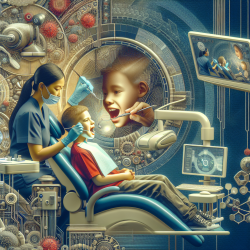As practitioners in the field of speech language pathology and special care dentistry, we are always looking for evidence-based strategies to improve our clinical outcomes. The recent case report, "Restoration of an Upper Anterior Tooth in an Adolescent with Autism Spectrum Disorder—A Student Case Report," provides valuable insights that can help us better serve children with autism spectrum disorder (ASD) in dental settings.
This case report documents the successful restoration of an upper anterior tooth in a 15-year-old boy with early childhood autism, performed by dental students at Witten/Herdecke University. The success of this treatment hinged on several key strategies that we can adopt and adapt in our practice.
Key Strategies for Successful Dental Treatment of Adolescents with Autism
- Desensitization Sessions: Before initiating the actual restorative treatment, the dental team conducted several short desensitization sessions in familiar surroundings. This approach helped the patient acclimate to the dental environment, reducing anxiety and improving cooperation.
- Behavioral Facilitation: The tell-show-feel-feel-do technique was employed to make the patient comfortable with the dental procedures. This method involves explaining and demonstrating each step of the treatment process, allowing the patient to feel the instruments, and then performing the procedure.
- Consistent Environment and Team: Maintaining a consistent environment and treatment team was crucial. The patient was always accompanied by familiar figures such as his mother or caregiver, and the dental team remained consistent throughout the treatment.
- Gradual Increase in Treatment Complexity: The complexity and duration of the treatment were gradually increased. Initial sessions focused on simple procedures like professional teeth cleaning, which helped build the patient's trust and cooperation for more invasive treatments.
- Adaptation to Patient’s Needs: The treatment plan was flexible and adapted to the patient's needs. For example, the use of a rubber dam was avoided to prevent overwhelming the patient, and high-gloss polishing was postponed to a subsequent session when the patient showed signs of restlessness.
Encouraging Further Research and Education
This case report underscores the importance of specialized training in special care dentistry for pre-graduate dental students. Incorporating such training into the dental curriculum can significantly improve the quality of care for patients with ASD and other special needs.
As practitioners, we should not only implement these strategies but also advocate for further research and education in this area. By doing so, we can ensure that all children, regardless of their abilities, receive the highest standard of dental care.
To read the original research paper, please follow this link: Restoration of an Upper Anterior Tooth in an Adolescent with Autism Spectrum Disorder—A Student Case Report.










